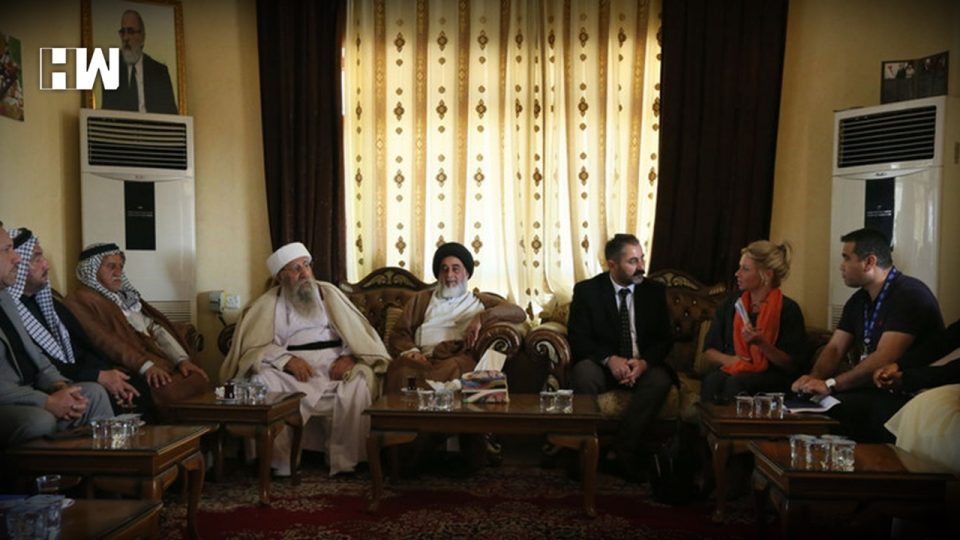When Member States signed the United Nations Charter 75 years ago, it was to prevent more existential conflicts and save succeeding generations from a third world war.
Conflict prevention is part of the Organization’s DNA and remains a central priority today, a guiding principle behind the UN Secretary-General’s current call for a global ceasefire during the coronavirus pandemic.
On Friday, UN-mediated efforts yielded a potentially historic ceasefire accord between the warring parties in Libya, led the UN Support Mission, UNSMIL, hailed by Acting Special Representative and UNSMIL head, Stephanie Williams, as a “decisive and courageous first stop towards a comprehensive settlement”.
Saturday is UN Day, when the Charter officially came into force, so we are taking this opportunity to look back at three-quarters of a century of hard and dedicated effort, to prevent conflict and war.
Conflict prevention in five not-always-easy steps
Step one, is to have a finger on the pulse wherever tensions are running high. This requires being on the ground to best understand what is really going on, and how to diffuse it.
The UN Department of Political and Peacebuilding Affairs (DPPA) has more than 35 special political missions around the world, to keep an eye out for developing situations.
Second, is to work the political track early, by maintaining connections with Government officials and other key players. For this reason, DPPA officers maintain close contact with key actors in all 193 UN Member States.
The third element is to include many voices, such as those of women and youth, to build consensus and momentum for peace.
Partnerships is the fourth component – including with regional organizations and international financial institutions – to link short-term political work with longer-term peacebuilding and development efforts.
Finally, and most importantly, is to focus political will from all actors, to thwart conflicts.
What are so-called good offices?
With those five building blocks present, prevention works.
However, when they are not, the UN uses its good offices, derived from the UN Charter and developed through extensive practice, toward the peaceful settlement of disputes.
Mediation can be set in motion by the UN chief himself or in response to a request from the Security Council, the General Assembly or a party to a dispute.
As part of its good offices, UN envoys or special advisers are currently working to resolve conflicts in Myanmar, Yemen and Syria.
And special political missions?
Among other things, DPPA manages Special Political Missions (SPMs) in the field to prevent conflict, mediate peace and help countries rebuild post-conflict, throughout the world.
Each mission provides country-specific diplomacy and other activities to avoid and mediate armed conflict. They also coordinate with national and other UN actors on the ground to support complex political transitions.
Recent successes in Colombia and the Southern Philippines, as well as the resolution of the name issue between Greece and North Macedonia, are evidence that the settlement of conflicts is possible “even in an increasingly complex world”, according to Teresa Whitfield, Director of DPPA’s Policy and Mediation Division.
Mediation hurdles
However, divisive geopolitics, the resurgence of populism and increased outside involvement in civil wars, are hampering peacemaking efforts in many places.
“Enthusiasm for mediation as a tool to prevent and resolve armed conflict has never been more vocal, nor mediators busier”, said Ms. Whitfield.
Mediation has long relied on a capacity for human interaction and with the complexity of today’s armed conflicts, mediators have had to develop new tools, practices and strategies.
The UN, along with international and regional non-governmental organizations, States and a broad array of local actors, may all be involved in working to revolve a single conflict.
Mediators today are impeded by a range of challenges, such as conflict fragmentation; the involvement of non-State armed groups; political, economic and ideological agendas; porous borders that facilitate the movement of armed groups; and systemic factors, such as climate change.
Citing renewed divisions between Russia and the United States, new tensions between the US and China as well as Sunni-Shi’a divisions with impacts across and beyond the Arab world, Ms. Whitfield pointed out that negotiations are also “thwarted by a heady, and often toxic, combination of divisive geopolitics”.
The long haul
The demands for mediation to meet the complex challenges of today’s armed conflict are urgent and long-term endeavours, Ms. Whitfield explained.
She upheld that “a mediator will be in for a marathon effort, perhaps a relay, rarely a sprint” and must consider engagements and strategies at multiple levels with numerus actors.
And while working in the shadow of geopolitics, the UN must also be conscious of grounding the legitimacy of a peace process within, as well as beyond, combatants themselves.
For all of this, the UN DPPA official stressed the need to maximize new technologies, paying particular attention to the next generation, while thinking about structural issues for incremental progress towards a sustainable peace.
As an independent media platform, we do not take advertisements from governments and corporate houses. It is you, our readers, who have supported us on our journey to do honest and unbiased journalism. Please contribute, so that we can continue to do the same in future.

